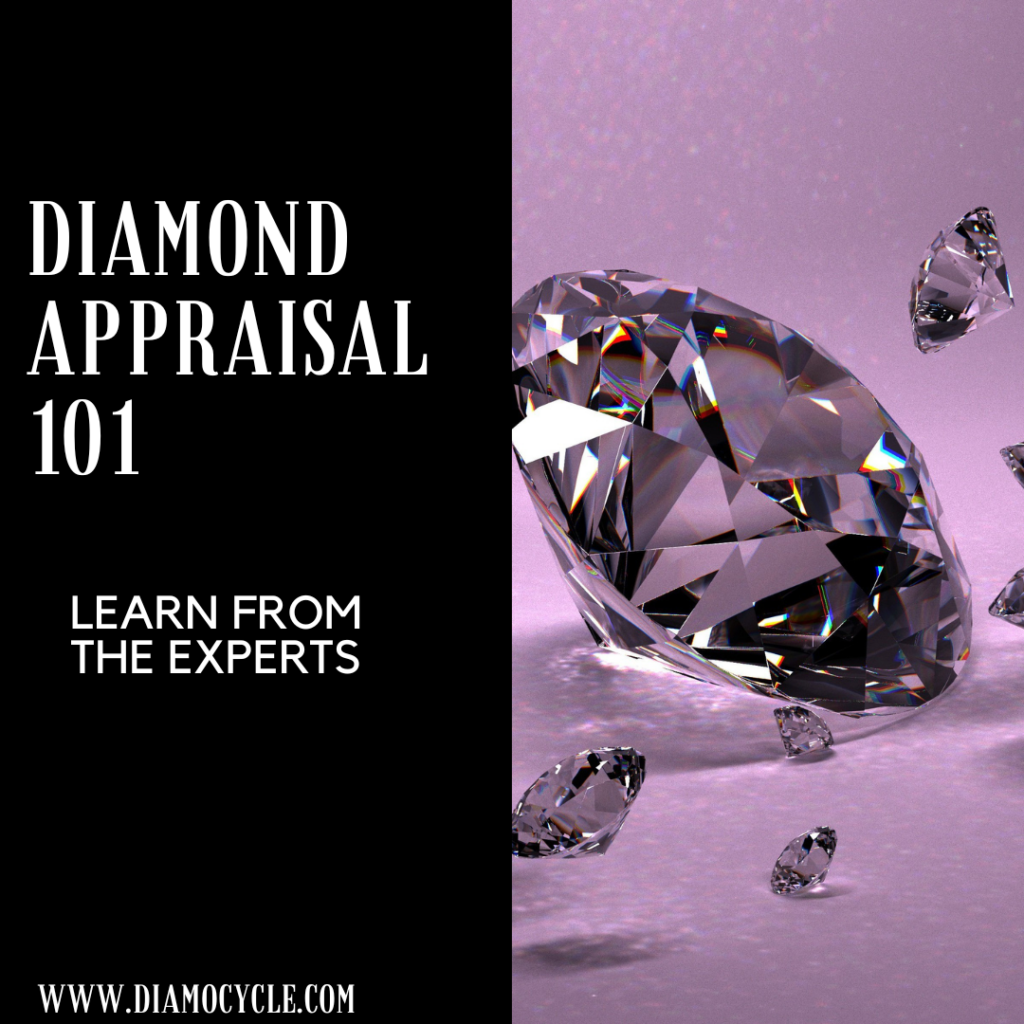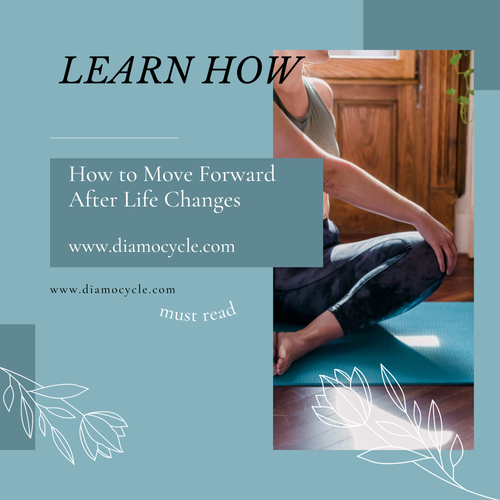Diamond appraisal is a unique and often convoluted process. That said, it’s always worth knowing what your valuables are worth! With that in mind, here’s our Diamocycle Guide on Diamond Appraisals, to ensure you enter your jewelry appraisal equipped, educated, and informed.
What is a diamond appraisal?
A diamond appraisal is the process by which a gemologist or jewelry appraiser assigns a monetary value to a diamond or piece of jewelry. There are 27 different types of appraisals, based on their purpose, including selling a diamond or trying to discover your diamond resale value – so it’s always good to know why and what you’re looking for!
Why get a diamond appraisal?
People get diamonds appraised for a variety of reasons including inheritance, taxes, division of an estate between heirs, appraisal for jewelry insurance, an update on an insurance policy or an outdated jewelry appraisal. If you own a piece of jewelry or are aiming to sell a diamond ring, we highly recommend knowing how much your diamond is worth!
Given our long history in the diamond (and appraisal) business, we strongly recommend getting a diamond appraisal that meets your needs. Knowing what the diamond costs for inheritance taxes, insurance, resale, or just an estimate are all slightly different appraisal processes.
What are the steps to getting a diamond appraised?
-
Cleaning. First, the diamond is cleaned, to ensure that the appraiser has a clear and full view of the stone.
-
Condition Inspection. Next, its condition is reviewed for any damage, and its authenticity is tested, to ensure that it is a real (and not synthetic) diamond.
-
Measurement and the 4Cs. Next, the appraiser ascertains the 4Cs of the diamond and measures it.
-
Summary and Report, and lastly, the diamond grader will write a report with their findings and assign a market value.
What are the 4Cs of diamond grading and appraisal?
We’re glad you asked! The 4Cs of Diamond Grading and Appraisal are as follows:
Carat: This is the size of the diamond, as determined by its weight. And in case you’re curious as to how much is 1 carat: 1 carat is .2 grams.
Color: While at first glance most diamonds look clear, diamonds actually often have a slight brown or yellow tint to them. The color grade is determined on a scale form D (void of color) to Z (having a yellow tone).
Cut: This is the actual way that a diamond is cut, which is determined by the proportions and angles of each facet. Some standard cuts are: Point Cut, Table Cut, Old Single Cut, Peruzzi Cut, Mazarin Cut, and Old European Cut.
Clarity: This is the prevalence of flaws, inclusions (internal flaws), blemishes, scratches, or clouds that might occur on the interior or exterior of the stone. Compared to a chipped diamond, a diamond that is flawless is rare and incredibly valuable.
Where should I go to get a diamond appraisal?
Where you go depends on the value of the piece! While jewelry stores, independent appraisers, GIA appraisers, and other professionals might all offer an appraisal, it’s important to consider the expert you’re asking to appraise your diamond, based on the piece.
We would recommend hiring a trained gemologist with GIA credentials who’s well-versed in the qualities that make the piece unique, along with extensive knowledge of the second-hand market.
Here’s a Link to GIA Appraisal Associations, To Start.
That said, always remember that there’s no shame in asking for an appraiser’s credentials, what sorts of pieces they deal in, their specialty, and why they are best suited to appraise your stone. You’re about to hire them, there’s no problem in interviewing them for the job!
What should I look for in a diamond appraisal?
-
A Certified and Expert Gemologist. Never be afraid to ask for your specialists credentials or expertise! You want to make sure your diamond’s in expert hands.
-
A Process That Matches The Purpose of Appraisal. As mentioned, there are many different reasons to get an appraisal and each reason will result in a different process. Feel free to discuss with your gemologist your motives and to enquire into the process, to ensure that they are well matched.
-
A Definitive Statement of Value with Authorized Approval. Make sure your appraise ends with documentation that refers back to your gemologist. As mentioned, we recommend using GIA-Certified Gemologists for all appraisals.
-
A Declaration of Appraisal Purpose on Certificate. This will offer vital clarity as you move forward with the appraisal and your diamond.
-
A Strong Rapport and Trust in Your Gemologist. You’re trusting them with your diamonds, make sure you trust them fully.
What does an appraisal cost?
An appraisal should cost roughly $50-$150.00 an hour based upon the complexity of the work, the geographic area, and the training and expertise of the appraiser.
Given the uniqueness of each diamond piece, if possible, it’s important to hire an expert who is knowledgeable in the quality of your stone, whether it’s an Old European Diamond, an Antique Diamond, or a Colored Diamond.
We strongly recommend avoiding low rates of service or percentage of value services, for the integrity of your appraisal itself.
Diamocycle offers a few expert valuations for market price, by making an offer. If we choose not to make an offer, we will assign a verbal suggestion and even advise our clients on where else they can sell their piece.
What’s the difference between a diamond appraisal and a diamond grading report?
A diamond appraisal will vary based on its specific purpose, and appraisers sometimes tend to overinflate the value of the diamond for insurance purposes or to confirm and inflate the value of a piece about to be sold. If you already own the piece, please note that appraisals do not always reflect the selling price you might receive in the retail market.
As mentioned, we strongly recommend only using GIA for Diamond Grading. A diamond grading results in a universally accepted certificate or report that insurance companies, diamond merchants, and other professionals in the business can use to determine the value of the diamond. The grading report is conducted by a trained gemologist and rates your diamond on the 4Cs (color, cut, clarity, and carat) of diamonds.
Please note that grading a diamond on the 4Cs can be incredibly subjective, and we urge you, as always, to exercise the utmost caution when having your diamond graded or appraised, and we strongly recommend using a GIA certified professional. Likewise, we encourage you to never purchase a diamond without a GIA certificate or report, as having a report will make selling your diamond or discussing its value far easier in the future.
As always, we, at Diamocycle, are here for you. Feel free to contact us with any other questions you may have about your diamonds or the process. We look forward to supporting you in your diamond appraisal.
As Always, Your Family Jeweller,
Diamocycle





